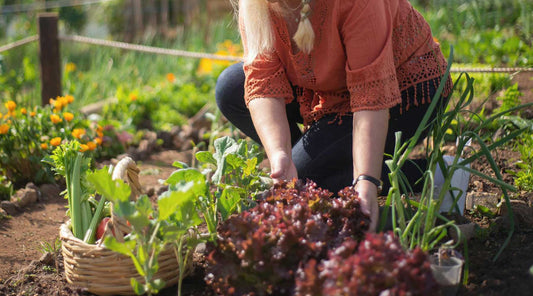The days are getting shorter, the nights are getting colder, and your summer crops may have taken a turn for the worse. For many, the end of summer means the end of backyard barbecues and days spent at the beach, but for others, the approach of fall is an exciting change. The thought of wrapping up in comfy sweaters, carving pumpkins, and indulging in a plate (or six) of apple pie is enough to bring a smile to even the biggest summer lovers face. As for your garden, you may not have time to grow a sprawling pumpkin patch, but there is plenty you can still do now that fall is here. Surprisingly to some, fall is a relatively easy season for gardeners. Pests aren’t as prevalent, your soil won’t dry out as easily, and the sun is less likely to burn leaves. So let’s cover the process of turning your summer garden into an Autumn abundance of plants.
Prepping Your Soil
The first thing to do is clear out your old summer garden. It may be painful digging up the pepper plant that was once fruitful and now wilting or saying goodbye to your newly browned watermelon plant, but we all have to move on at some point, right? Once you have your old plants uprooted, you need to check on the quality of your soil. Whether you’re planting in the ground or growing from containers, soil composition is extremely important for the health of your fall plants. If you intend to grow mostly edible plants, your soil needs to be slightly acidic. You can purchase a soil pH meter at most garden stores and nurseries. If you find your soil to be too basic the standard practice is to add sulfur. On the flip side, if your soil is too acidic then add ground limestone. Once you have your pH where you want it, make sure that your soil’s moisture level is between 40% to 70% before you plant. The last step for preparing your soil is to boost it with some fertilizer. Here at Yard Butler we always recommend Dr. Earth for all of your fertilizer needs. Organic fertilizers are ideal because they don’t contaminate the surrounding environment, and keep harmful chemicals away from your children and pets.
Mulching
Once your soil is exactly where you want it, it’s a good idea to add mulch to your garden to keep the soil moist as well as limit weeds and pests. A clever and cost-effective way to mulch your garden is to collect those pesky fall leaves and allow them to dry. We just so happen to make the World’s Greatest Rake which is stiff enough to pick up wet leaves and flexible enough to not damage your landscape. Once you’ve dried the leaves you can either shred them or leave them as is (pun intended). Apply approximately two to three inches over your garden bed for full effectiveness.
Picking Your Plants
When your garden bed is ready to get growing, it’s time to pick your fall plants. If you’re reading this in the current apocalypse-esque world of 2020, then it’s a bit too late to grow fall plants from seeds. Instead, you can head to your local nursery and pick out some starters or more mature plants that you can then transplant into your garden. As with any season, what you grow and when is also dependent on your hardiness zone, so be sure to pick your plants accordingly. Some fall favorites veggies include beets, beans, radishes, brussels sprouts, turnips, lettuce, and green onions. Fall is also perfect for planting perennials and spring bulbs, which will reward you with a beautiful and vibrant flower garden. Another way to make the most of the cooler temperatures is by planting trees and shrubs.
Once you’ve planted your ideal fall garden, follow the instructions included on your plants, listen to the advice of your local nursery, and turn to Google when all else fails. By the time Winter comes, you should have a bounty of fall crops to incorporate in your favorite dishes and brighten your home.






